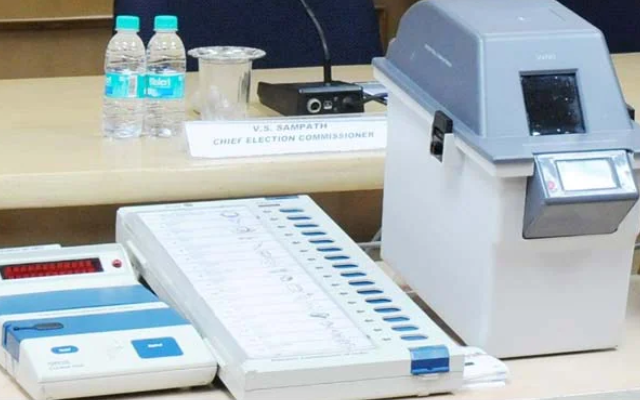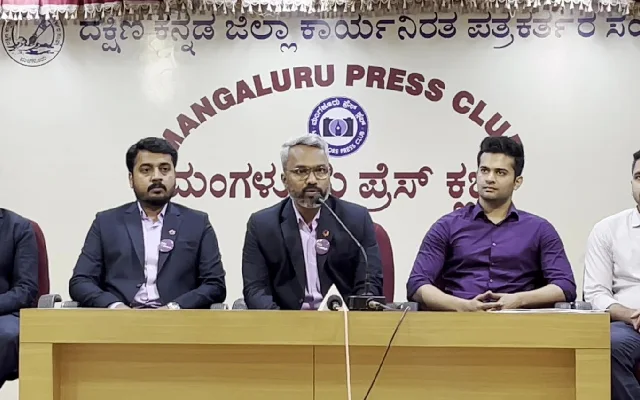
PART – I
Prime Minister Narendra Modi today blasted the Congress manifesto for the national election, calling it as “dishonest” and full of lies as the party’s leadership. “It is not a ghoshnapatra (manifesto) but a dhakosla-patra (hypocritical document),” PM Modi said, campaigning in Arunachal Pradesh.
The Congress released its manifesto on Tuesday with its chief Rahul Gandhi highlighting its focus on five big economic and social ideas including the NYAY scheme that promises Rs. 72,000 a year to India’s poorest families.
Is it full of lies and hypocrisy as PM Modi says or is it full of hope and truth as Rahul Gandhi, the President of the Indian National Congress says? Gatbandhans, Maha or otherwise apart, the promises it makes seems to have the BJP’s senior strategists rattled. And already a couple of them, the Finance Minister, the President of the Party and now the Prime Minister have called it lies and an attempt to weaken India. Unfortunately, the more they criticize it, the more it gets studied with a microscope. Perhaps the best strategy would have been to let it die a natural death… After all these days, who reads, let alone believes that Manifestos are an agreement to deliver and failure to deliver must amount to a criminal breach of trust? No one.
This manifesto has generated a lot of interest because of its focus on wealth and welfare – the paradoxical twins of democracy – and the way it has balanced them, though the balance tends to the latter. The manifesto adopts a rights-based approach, rather than a duties based approach to governance. This has its advantages in terms of votes, but it can backfire when such rights are created but not fulfilled. And this alone is the reason enough for a deeper examination of the manifesto… (in three parts)
The choices before India’s polity
At the beginning, the manifesto reminds us that the 2019 elections are being held during Mahatma Gandhi’s 150 birth anniversary year. Naturally for those who still believe in his ideologies and that number is dwindling, it’s an important election and the manifesto works hard to drill that message home through a comparison of future scenarios under a Congress government and a continuation of the present regime…
According to the manifesto, the following are the possible choices:
“The 2019 elections are crucial for India’s future and our children’s future. The choices before our citizens are crystal clear.
Do we choose freedom or fear?
Do we choose harmony or hatred?
Do we choose inclusion or exclusion?
Do we choose dignity or oppression?
Do we choose prosperity for all or wealth for a few?
Do we choose results or jumlas?
Do we choose justice or injustice? “
The INC believes it can deliver the choice of the people should they choose them and in fact goes to make the promise “We have delivered before. We will do it again!” as its tagline.
Detractors will disagree on the promise of delivery and perhaps the choice of scenarios, especially given the Congress’s past failures in some of these areas, but then they will have to do so, not with the pen or on social media, but with their thumb come election day and with these choices before the citizens, the citizens will take some convincing I assume.
Kaam – Employment and Growth
a. Jobs – Here the promise is to create a new Ministry of Industry, Services, and Employment. Now that would be employment for a few no doubt, much like the NITI UDYOG is. But more importantly, the manifesto promises to fill all of the 4 lakh vacancies as on 1st April 2019 in the Central Government, Central Public Sector Enterprises, Judiciary and Parliament will be filled before the end of March 2020. That’s a substantial figure, all in the organized sector and with a guaranteed salary, even if more currency has to be printed. It will boost morale and GDP when they utilize their salaries. Interestingly application fees for government examinations and government posts will be abolished. There are also new Seva Mitra positions (estimated at 10 lakh) on the anvil in every Gram Panchayat and every Urban Local Body to ensure the effective delivery of government services to citizens. Congress will link the definition of MSME to employment. A business employing 10 persons or less will be ‘micro;’ between 11 and 100 will be ‘small;’ and between 101 and 500 will be ‘medium’ and an Enterprise Support Agency will be created to support. (In turn, it too is an employment avenue. This is how it proposes to boost private sector employment. Additionally for the less skilled there are two government programmes to increase employment – Congress will launch 2 major programmes to be implemented through Gram Sabhas and Urban Local Bodies that will create lakhs of jobs: Repair and restoration of water bodies (‘Water Bodies Restoration Mission’); and, Regeneration and afforestation of wasteland and degraded land (‘Wasteland Regeneration Mission’). All of these make for a focussed strategy to create jobs through it will put the exchequer through the wringer. But that is for the government that follows to manage.
b. Industry – The key highlights here are the proposed ‘Make for the World’ Policy under which ‘Exclusive Export-only Zones,’ will be set up for the manufacture and export of their entire production, where enterprises will pay no indirect taxes and pay a low rate of corporate tax. Additionally, they will say in their manifesto to promote the manufacture and export of India’s traditional products like handloom products and handicrafts that employ lakhs of persons and review the tax terrorism methodology adopted by the current regime including the discretionary powers of enforcement agencies.
c. Infrastructure – The Key take away in this area, for me, is the promise to enhance the availability of, and access to, electricity in rural areas by encouraging investment in off-grid renewable power generation with ownership and revenues vesting in local bodies. Every village and every home will be electrified in the true sense. In the long term, we aim to substitute LPG used in homes with electricity and solar energy. The rest of the promises are passe.
d. Urban Policy – Here the key take away is a radical new way of city governance – the Congress promise to introduce a new model of governance for towns and cities through a directly elected mayor with a fixed term of 5 years, an elected Council and a separate administrative structure for each urban body. The administration will be accountable to the Mayor and the Council and there will be a provision to recruit technical experts and build capacity as well as multi-disciplinary teams to do urban planning and implement municipal works. They also promise to enforce the 74th Amendment to the Constitution and ensure the devolution of powers, functions, and funds to the Municipalities and Corporations, making them financially independent. The intention is good but it is not really clear if this can be imposed from the top on states who administer the urban local bodies. If implemented, it will be a big step forward and at some point in time in the future even lead to a presidential form of governance for the country
e. Rural Development – Like software updates, the Congress proposes to revamp its MNREGA scheme and call it the MNREGA 3.0 to address issues of water security, soil quality, and similar issues that aggravate farmers’ distress. “To this end, we will: Increase the guaranteed days of employment up to 150 days in cases where 100 days have been achieved in a block/district; Use MGNREGA labour in the Waterbodies Restoration Mission and the Wasteland Regeneration Mission; and Use MGNREGA funds to build public assets such as primary health centres, classrooms, libraries etc.” This is part of its plan to create employment for the lesser skilled and this is much like a public infrastructure stimulus package. But the most important promise made in this section of the manifesto is the promise to pass the Right to Homestead Act to provide a homestead for every household that does not own a home or own land on which a house may be built. How this will be done is anybody’s guess – another round of land reforms or the parceling away of all government land? It’s a promise the rural poor especially, and even the urban poor will hold them up to – it’s their hope of ‘acche din’ which included in 2014, Rs: 15 lakhs in the bank account of every Indian.
To be continued – Part II (Will appear tomorrow)


















